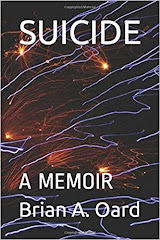Friday, August 25, 2017
THE WHOLE MOTION : COLLECTED POEMS 1945-1992 by James Dickey
James Dickey is passing into the oblivion of the unread. Anthologists seem to treat him as, at best, a 'major minor poet.' So it may surprise some readers of this blog when I call his collected poems a major, essential work in the canon of American poetry, a book as important as Anne Sexton's, Robert Lowell's or Allen Ginsberg's collected poems. The Whole Motion surprised the hell out of me when I picked it up last fall, as Dickey's country and mine careened toward the shoddily-constructed brick wall of Trumpite fascism. I had previously encountered Dickey's poems in anthologies, of course, but his tripartite reputation as an aesthetic conservative, a boorish, self-promoting ass, and the man ultimately responsible for making Ned Beatty squeal like a pig, for years negatively colored my response to his work. By 2016, about two decades after Dickey's death, time had folded the person into the poet, and after a few days in The Whole Motion I could state with confidence that at least the first part of that reputation was dead wrong. Far from being any kind of aesthetic conservative, Dickey in his strongest and most original work is an iconoclastic, avant-garde, Southern Gothic poet--perhaps the only truly great Southern Gothic poet this country has produced, a verse counterpart to William Faulkner and Flannery O'Connor. Unlike most poetic careers, Dickey's is best read straight through, like a novel. The early WWII poems, many first published here, are nothing less than a revelation. Instead of the usual skippable juvenilia we expect at the opening of a lifetime collection, these works announce an artist who has already achieved poetic maturity in the forcing house of war. Reading on, we detect some repetitions but rarely a misstep, we trace the development of a poetry that draws its energy more from image and narrative than from lyrical musicality; and then come the poems of the 60s and 70s to blow us away. I am especially impressed by "The Firebombing," "Kudzu," "Cherrylog Road," "The Fiend," "A Folk Singer of the Thirties," "The Sheep Child," "Falling," "May Day Sermon," "Slave Quarters," and "The Eye-Beaters." To suggest the excellence of these works, I'll take the last one as typical of his best and remark that it's a Bloomian revision of Yeats's "Among School Children" in which the poet visits a school for the blind where the children repeatedly strike their eyes in a fruitless, self-lacerating attempt to induce vision. The poem is built around the central idea that the Platonic cave of human sight protects us not from any blinding light of Truth but from the horrible mundane truth of the nothingness of reality. Granted, Dickey doesn't always achieve, or even aim for, such heights, and the poems after May Day Sermon evince a slackening of artistic energy--late Dickey is pretty much a letdown. But with heights as high as the peaks I've listed above (among many others), no one need linger over the valleys. Dickey deserves a place alongside Lowell, Sexton, Ginsberg, Ferlinghetti and Plath as one of the greatest poets of American Late Modernism. It's time for a James Dickey revival.
Subscribe to:
Post Comments (Atom)










1 comment:
I was once accosted by him in the checkout line of a university bookstore, & chatted for awhile.
Post a Comment